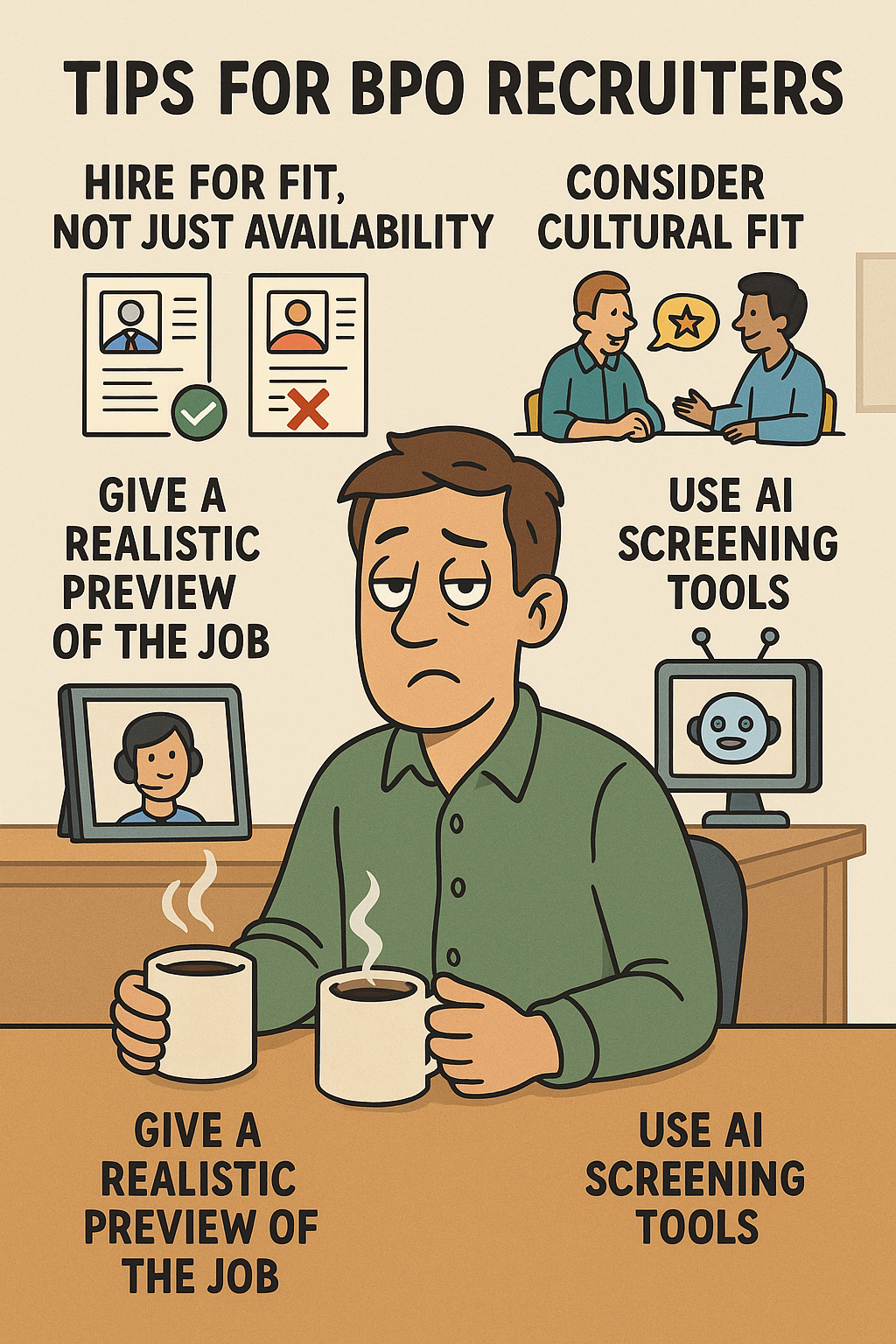
Reducing Attrition Starts with Hiring: Tips for BPO Recruiters
Why BPO Attrition Starts With the Hiring Process
If you're in the BPO world, you know that employee turnover is more than just a pain—it's a persistent operational threat. With annual attrition rates often exceeding 30–40%, it can feel like you're constantly refilling a leaky bucket. While many factors drive this churn—such as career mobility, compensation, or work conditions—one key contributor is often overlooked: the hiring process itself. Hiring the right people, in the right way, can dramatically impact how long they stick around. If you're a recruiter or talent leader in a call center or BPO setting, focusing on retention starts the moment you engage a candidate.
Step One: Hire for Fit, Not Just Speed
High-volume hiring often becomes a race to fill seats quickly, but short-term convenience leads to long-term headaches. Instead of simply grabbing the first available candidate, take time to evaluate how well someone fits the actual demands of the role. BPO jobs can be repetitive, fast-paced, and emotionally draining—especially in customer service environments. Ask behavioral or situational questions that reveal a candidate’s resilience and awareness of the role's realities. Often, a slightly less experienced but self-aware candidate will outperform and outlast someone overqualified but mismatched for the role.
Step Two: Prioritize Culture and Commitment
Retention is about more than hard skills—it’s about connection and motivation. Cultural fit, especially in close-knit team environments like night-shift call centers, plays a massive role in whether someone feels like they belong. Involve peers or supervisors in interviews to help assess that chemistry. Beyond that, gauge a candidate’s outlook: Do they see this job as a temporary fix or an opportunity? Even if they’re not committing to a lifelong BPO career, showing curiosity about internal growth or lateral movement is a good sign. Share real paths for advancement to attract candidates who are thinking longer-term.
Step Three: Be Realistic—and Use Tech to Help
Too many new hires leave in the first 30 days because the job wasn’t what they expected. Give candidates a clear-eyed view into the reality of the work—whether through honest conversations, sample calls, or even short preview videos. Let them self-select out if it’s not a fit. On the tech side, use AI and video screening tools to evaluate communication style, attitude, and commitment. Platforms like Jobz, for instance, let candidates record video answers, which AI can help assess for tone, enthusiasm, and alignment. It’s not about replacing human judgment—but making it smarter and more scalable when you’re reviewing hundreds of applicants.
Step Four: Make Onboarding the Continuation, Not the Cliff
Retention doesn’t stop at offer acceptance. Candidates who felt excited to join can quickly disengage if onboarding is messy or disconnected from what they were promised. Partner with operations and training to ensure new hires feel supported from day one. That might mean adding a buddy system, gamifying the first week, or simply checking in more frequently. Every step of the candidate experience—hiring, screening, onboarding—should reinforce the idea: "You made the right choice." And when employees feel that early on, they're far more likely to stay.
